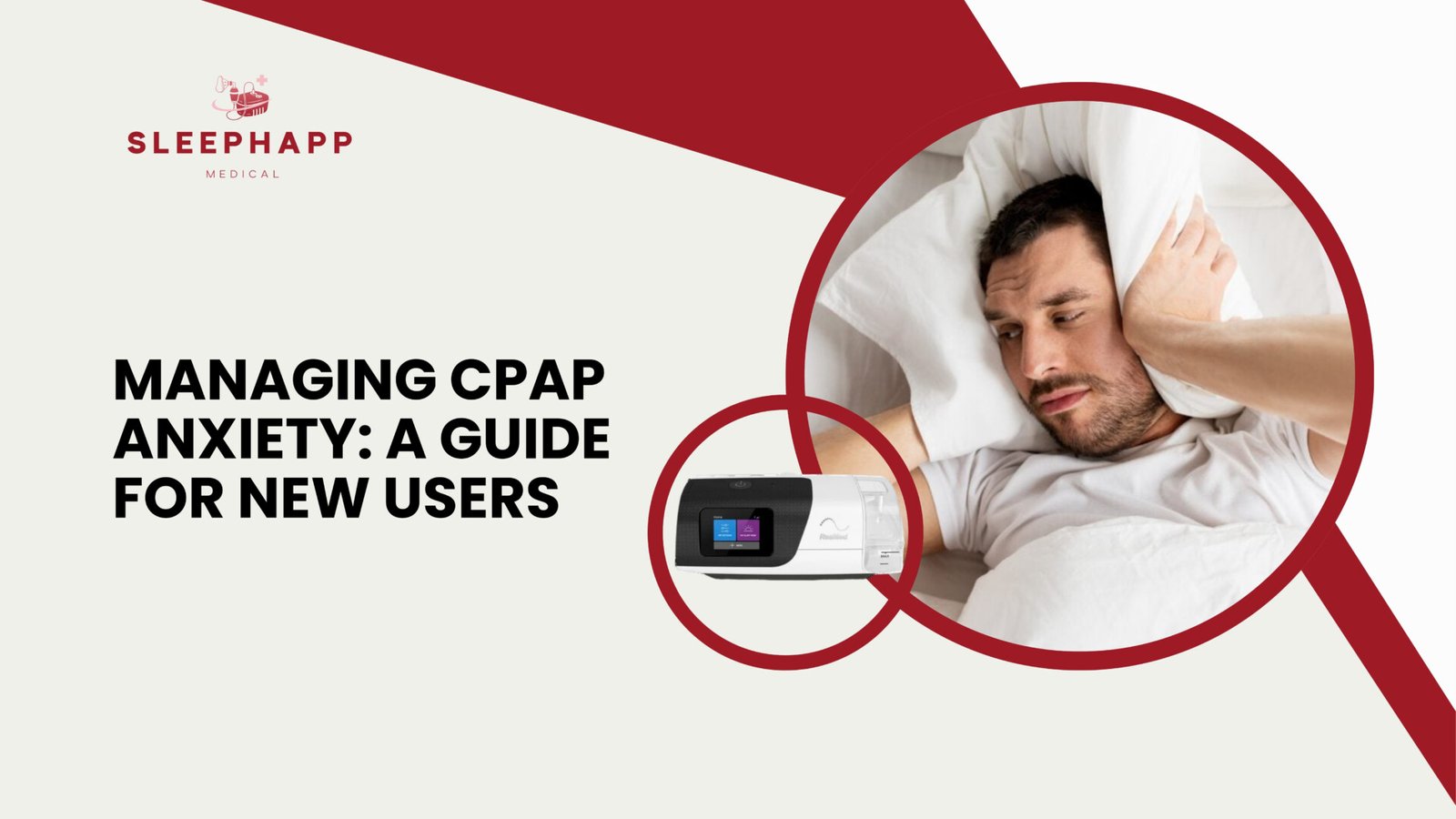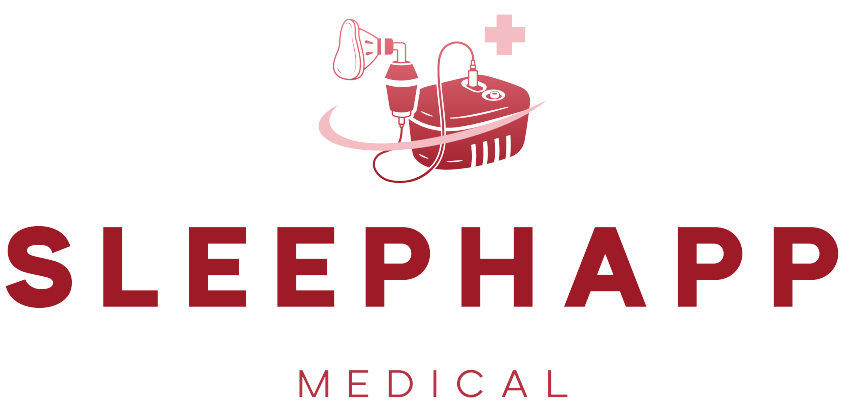Managing Anxiety Around CPAP Therapy: Strategies for New Users
Home » Managing Anxiety Around CPAP Therapy: Strategies for New Users

Table of Contents
Starting CPAP therapy can feel stressful, especially for beginners. CPAP helps with sleep apnea and improves health. But many people worry about using the machine. They may feel uncomfortable, hear noise, or feel trapped. These concerns are typical. With the proper steps, new users can get used to CPAP and feel more comfortable.
Understanding CPAP Therapy
CPAP therapy gives steady air through a mask. It keeps the airway open while you sleep. This stops breathing pauses. It also reduces snoring and helps you sleep better. CPAP has many health benefits. It lowers tiredness during the day. It also reduces heart disease risk and helps the brain work better. But new users often have some worries, such as:
- Feeling Trapped – Wearing a mask all night may feel tight at first.
- Dryness and Discomfort – Some people get a dry or irritated nose.
- Machine Noise – Newer CPAP machines are quieter, but some worry about sound.
- Fear of Dependence – Some fear they can’t sleep without CPAP.
- Handling these worries early helps users feel calm and comfortable.
By addressing these concerns early, new users can reduce anxiety and increase their comfort with CPAP therapy. To learn more about CPAP and its benefits, visit the National Heart, Lung, and Blood Institute.
Strategies to Reduce Anxiety
Educate Yourself
To feel less worried, know how CPAP works. Study different settings, mask types, and features. Talk to doctors or watch videos to understand it better. Learning helps remove fear and builds confidence in using CPAP.
Gradual Adjustment
Instead of using the CPAP machine for a whole night right away, ease into it:
- Wear the mask during the day while reading or watching TV.
- Turn on the machine for short periods to get used to the airflow.
- Gradually increase usage to full-night wear.
This step-by-step approach makes the transition smoother and less stressful.
Ensure a Comfortable Fit
A mask that does not fit well can be uncomfortable. It may cause air leaks or pressure marks. To make it more comfortable:
- Try different mask types (nasal, full-face, or nasal pillow).
- Adjust the straps so it fits well but is not too tight.
- Use mask liners or cushions to stop skin irritation.
A good-fitting mask feels better and makes CPAP therapy easier.
Practice Relaxation Techniques
Calm your mind before bed to reduce CPAP anxiety.
Try these methods:
- Deep breathing – Helps with anxiety and airflow adjustment.
- Meditation and mindfulness – Lower stress and prepare for sleep.
- Soft music – Masks CPAP noise and helps you relax.
Doing this every night makes CPAP use easier. For more tips on adjusting to CPAP therapy, check out this guide.
Build a Support System
Talking to others about CPAP can help. Try these ideas:
- Join online forums or social media groups for CPAP users.
- Talk to a sleep therapist for more advice.
- Ask your doctor about any problems or concerns.
- Listen to success stories and tips from other users.
This can make you feel more confident and motivated.
Overcoming Initial Discomfort
New users may feel slight discomfort at first. Here are some tips:
- Dryness/Irritation: Use a humidifier to add moisture to the air.
- Pressure Sensation: Change ramp settings for a slow rise in airflow.
- Mask Discomfort: Try several masks to see the best fit.
Small changes can make a big difference, making CPAP therapy easier.
Staying Consistent for Long-Term Benefits
Staying consistent with CPAP helps improve sleep and health.
To stay on track:
- Track improvement with a CPAP app or sleep tracker.
- Set tiny goals and celebrate when you attain them.
- Consider long-term gains including less health risks and increased energy.
Over time, using CPAP becomes easy, and worry goes away.
Conclusion
Although it takes time, one can get used to CPAP treatment. Learn about the equipment, make little adjustments, keep comfortable, and experiment with relaxation techniques to lower stress. Support from doctors and other CPAP users can help. CPAP treatment eventually becomes a simple component of a good sleeping schedule, which enhances health and sleep quality.
Sources:
- https://pmc.ncbi.nlm.nih.gov/articles/PMC6886301/
- https://lofta.com/blogs/sleep-apnea/top-5-tips-for-new-cpap-users
- https://homemedical.thedacare.org/blog/post/tips-for-adjusting-to-cpap-therapy-overcoming-challenges-as-a-new-user
- https://www.sleepadvantagewa.com/combating-sleep-apnea-related-anxiety-strategies-for-a-peaceful-night-s-rest
